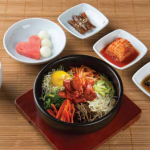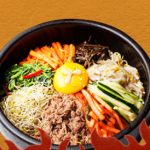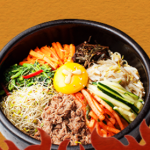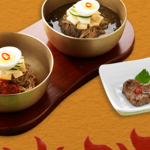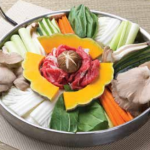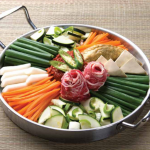Are you a fan of Korean cuisine? If so, you’ve probably marveled at the unique and bold flavors that these dishes offer. From spicy kimchi to savory bulgogi, Korean food has gained immense popularity worldwide. In this article, we will delve into some of the key ingredients that contribute to the tempting flavors of Korean cuisine.
Introduction
Korean cuisine is a delightful blend of vibrant colors, enticing aromas, and a harmonious balance of flavors. The key to achieving these delectable taste profiles lies in the careful selection and combination of exceptional ingredients. Let’s delve into the world of Korean cooking and discover the magical components used by Korean chefs that make their dishes so tasty.
Essential Ingredients
1. Gochujang (고추장)
Gochujang, a fermented red chili paste, is a cornerstone of Korean cooking. Made from chili powder, glutinous rice, fermented soybean paste, and salt, this iconic ingredient adds a rich, spicy, and slightly sweet flavor to dishes. It is commonly used as a base for stews, marinades, and dipping sauces.
2. Doenjang (된장)
Doenjang is another fermented soybean paste that holds a revered status in Korean cuisine. It is a primary ingredient in the popular soup, Doenjang jjigae, which is often enjoyed with freshly steamed rice. This paste imparts a deep, savory taste that enriches the overall flavor profile of the dish.
3. Sesame Oil (참기름)
Sesame oil is a staple ingredient in Korean cooking that adds a distinct nutty aroma and flavor. It is commonly used as a finishing touch to enhance the taste of a variety of dishes. Tossed with vegetables or drizzled over rice, sesame oil elevates the overall taste experience.
4. Kimchi (김치)
No discussion about Korean cuisine would be complete without mentioning kimchi. This traditional Korean side dish is typically made by fermenting cabbage with a combination of red chili pepper flakes, garlic, ginger, and salt. The result is a tangy, spicy, and slightly sour accompaniment that complements a wide range of Korean dishes.
5. Gochugaru (고추가루)
Gochugaru refers to Korean red pepper flakes. Chefs utilize this ingredient to add a fiery kick to Korean recipes. Gochugaru is responsible for the vibrant red color of many Korean dishes such as tteokbokki (spicy rice cakes), dakgalbi (spicy stir-fried chicken), and bibimbap (mixed rice bowl).
6. Soy Sauce (간장)
Soy sauce is a universal ingredient in many Asian cuisines, including Korean cooking. Known as ganjang, Korean soy sauce is made from fermented soybeans and adds a savory umami flavor to various dishes. It serves as a base for marinades, seasoning, and dipping sauces.
Conclusion
The art of Korean cooking relies on a combination of fresh ingredients, meticulous techniques, and a deep-rooted respect for tradition. Each element contributes to the depth and complexity of flavors found in Korean cuisine. From the fiery punch of gochujang to the aromatic sesame oil, these key ingredients play a vital role in creating the delicious taste that Korean food is renowned for.
So, the next time you savor a mouthwatering Korean dish, take a moment to appreciate the thoughtfulness and expertise that goes into crafting these incredible flavors.
FAQs
Q1: Can I use regular chili powder instead of gochugaru?
A1: Gochugaru has a unique flavor profile that traditional chili powder lacks. However, if you can’t find gochugaru, mixing regular chili powder with sweet paprika can serve as a substitute.
Q2: Is kimchi always spicy?
A2: Although most kimchi varieties have a spicy kick, not all kimchi is spicy. Some variations, such as white kimchi and water kimchi, have a milder flavor. However, the majority of kimchi does tend to be spicy.
Q3: Can I substitute miso paste for doenjang?
A3: While miso paste can be a suitable substitute for doenjang in certain recipes, it doesn’t offer the exact flavor profile of the authentic Korean ingredient. If possible, it’s best to use doenjang for an authentic taste.
Q4: How long does gochujang last in the fridge?
A4: Properly stored, gochujang can last for several months in the refrigerator, retaining its flavor and quality. Be sure to keep it sealed tightly in its original container or airtight jar.
Q5: Can I use regular soy sauce instead of Korean soy sauce?
A5: While regular soy sauce can be used as a substitute, it’s worth noting that Korean soy sauce (ganjang) provides a unique flavor that contributes to the distinct taste of Korean dishes.

